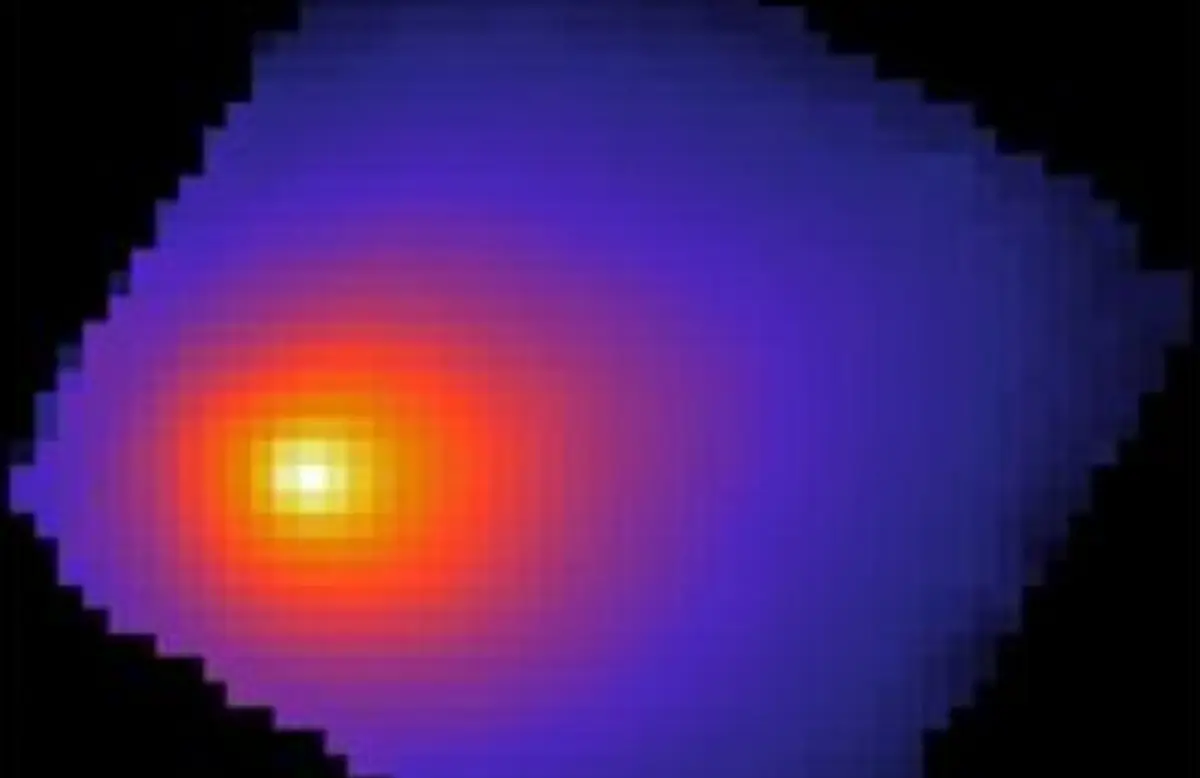Researchers analyze 3I/ATLAS trajectory for signs of solar gravitational lensing
-
 Comet 3I/ATLAS (Image via NASA)
Comet 3I/ATLAS (Image via NASA)Researchers are analyzing the trajectory of interstellar object 3I/ATLAS to determine whether its path shows measurable effects of gravitational lensing by the Sun.
According to Avi Loeb, Baird Professor of Science and director of the Institute for Science at Harvard University, 3I/ATLAS passed closest to the Sun on October 29, 2025, eight days after solar conjunction relative to Earth and 26 days after crossing the ecliptic plane near Mars.
Loeb stated that this confluence of orbital coincidences offers a "remarkable opportunity" to observe the effect of gravitational lensing of 3I/ATLAS by the Sun.
Observations from multiple astronomical facilities are being examined to quantify any lensing effect.
Gravitational lensing effects on 3I/ATLAS trajectory near the Sun
Trajectory and Gravitational Lensing
Gravitational lensing occurs when a massive object, such as the Sun, bends the path of light from a more distant source.
Loeb provided the formula for the light deflection angle: θ=(4GM/c2)⋅[Dds/(A⋅Ds⋅Dd)] where G is the gravitational constant, M the mass of the Sun, c the speed of light, A the angular separation of 3I/ATLAS from the Sun, and Dds,Ds,Dd the distances between the Sun and 3I/ATLAS, Earth and 3I/ATLAS, and Sun and Earth, respectively.
At perihelion, Loeb substituted Dd=1 au, Dds=1.36 au, and Ds=2.36 au, yielding a deflection angle of “0.27 arcsecond/(A/1 degree).” This value is within the range detectable by current astronomical telescopes.
Observational data near perihelion
Data obtained near perihelion from the Atacama Large Millimeter Array (ALMA) reported that 3I/ATLAS displayed a non-gravitational acceleration.
ALMA observations indicated the object was “4 arcseconds away in Right Ascension from where it was supposed to be near perihelion according to its forecasted trajectory.”
Loeb noted that gravitational lensing by the Sun would account for only a small fraction of this deviation.
Additional observations from solar observatories, including STEREO, SOHO and GOES-19, documented unusual brightening and a color bluer than the Sun, which are being included in the analysis of potential lensing effects.
Observers also recorded the timing of perihelion relative to solar conjunction and the ecliptic crossing, providing precise positional data.
These measurements allow scientists to refine models of the Sun’s gravitational influence on the object’s light path.
Physical and orbital anomalies
Loeb and colleagues have catalogued a series of anomalies associated with 3I/ATLAS.
These include its retrograde trajectory, which aligns within five degrees of the ecliptic plane, a sunward jet observed in July and August 2025, a nucleus more massive than that of prior interstellar objects, and close approaches to Mars, Venus and Jupiter.
Chemical analysis revealed elevated nickel levels relative to cyanide and a reduced water content in its gas plume. Loeb stated that near perihelion, the object “brightened faster than any known comet and was bluer than the Sun.”
Observers have calculated that if the non-gravitational acceleration were due to mass loss, a debris cloud exceeding five billion tons would be expected.
Upcoming observations in November and December 2025, as 3I/ATLAS approaches Earth, are intended to confirm or refute this expectation.
The combined observational datasets from ALMA, solar observatories and ground-based telescopes are under review to determine whether the predicted gravitational lensing effect of the Sun can be directly detected.
Loeb emphasized that these measurements provide a concrete test of Einstein’s theory of general relativity applied to an interstellar object passing near the Sun.
Stay tuned for more updates.
TOPICS: 3I/ATLAS, 3I/ATLAS comet, 3I/ATLAS trajectory, ALMA 3I/ATLAS data, Avi Loeb 3I/ATLAS, Avi Loeb 3I/ATLAS theory, comet 3I/ATLAS NASA update
- Europa Clipper spends seven hours watching 3I/ATLAS as NASA studies elements in its surrounding plume
- Harvard Professor Avi Loeb weighs evidence and interpretation surrounding anomalies in 3I/ATLAS
- Erratic rotation detected as MAVEN Mars probe remains silent
- Why 3i/Atlas’ alignment is raising questions: Avi Loeb breaks down the 1 in 40,000 odds